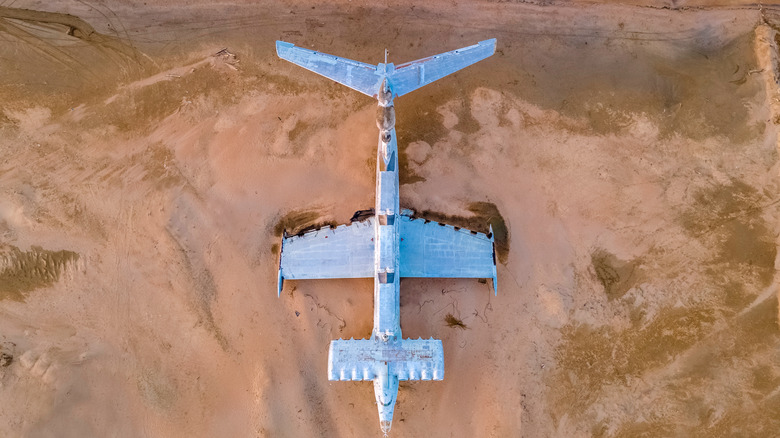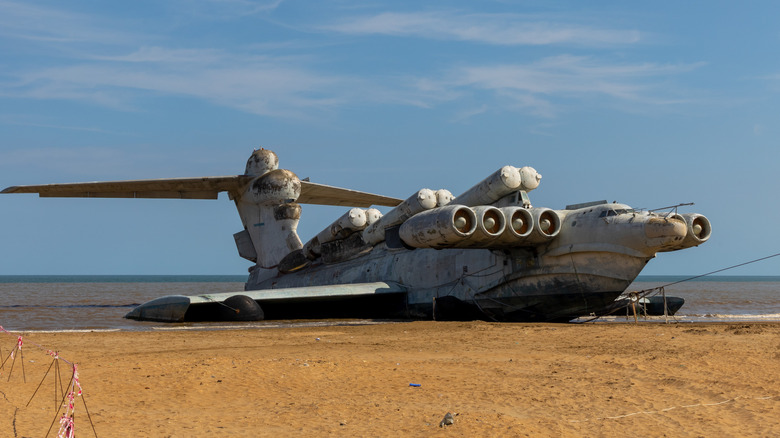How This Monstrous Russian Craft Wound Up Stranded On A Beach
The Cold War spurred the creation of never-before-seen, uber-destructive technology that could do everything from wreaking havoc to outright ending the world as we know it. Some of the inventions were odd and ultimately became defunct, while others proved useful for generations. Then there are those that have found graveyards in the strangest of places. One of those is a vehicle known as an ekranoplan.
It was a type of craft designed by the Soviet Union to take advantage of a wing-in-ground effect — a phenomenon explained by the International Maritime Organization as one where a plane "flies by using ground effect above the water or some other surface, without constant contact with such a surface and supported in the air, mainly, by an aerodynamic lift generated on a wing (wings), hull, or their parts, which are intended to utilize the ground effect action."
Ultimately, the program was scrapped in the 1990s, and one "Lun" ekranoplan, the only one ever finished, was beached along the Caspian Sea. Now, it is known as the "Caspian Sea Monster."
What happened to the Caspian Sea Monster?
Originally designed to attack NATO ally craft, this class of ekranoplan was commissioned by the Soviet Union in 1987. However, with the fall of the U.S.S.R., the program was never fully realized, and just one of the "Lun" crafts ever came to fruition. This 302-foot behemoth, as a result, was left to rust at a Russian Navy base for three decades until authorities made the decision to move it to a maritime museum by dragging it along the Caspian Sea.
"Lun is to become the star of Derbent's planned 'Patriot Park,' a military museum and theme park that will display different sorts of Soviet and Russian military equipment," CNN reported in 2021. It's unclear as of now if those plans will come to fruition. At the time of writing, the Lun erkanoplan is beached in Derbent, Russia's southernmost city, where it has become something of an attraction on its own.

